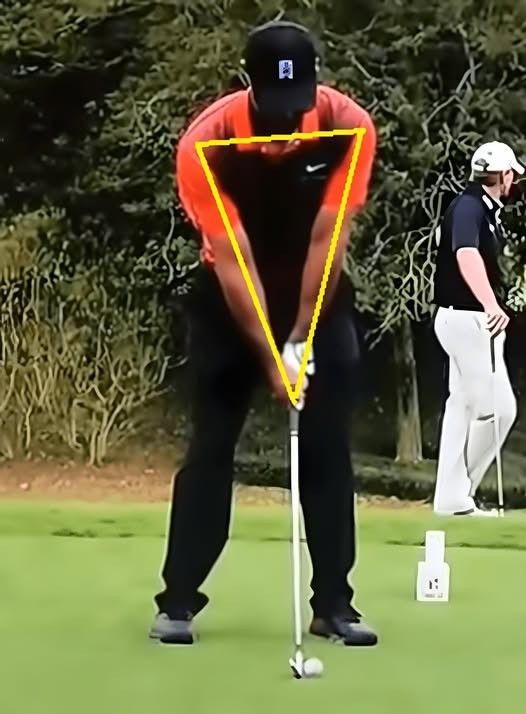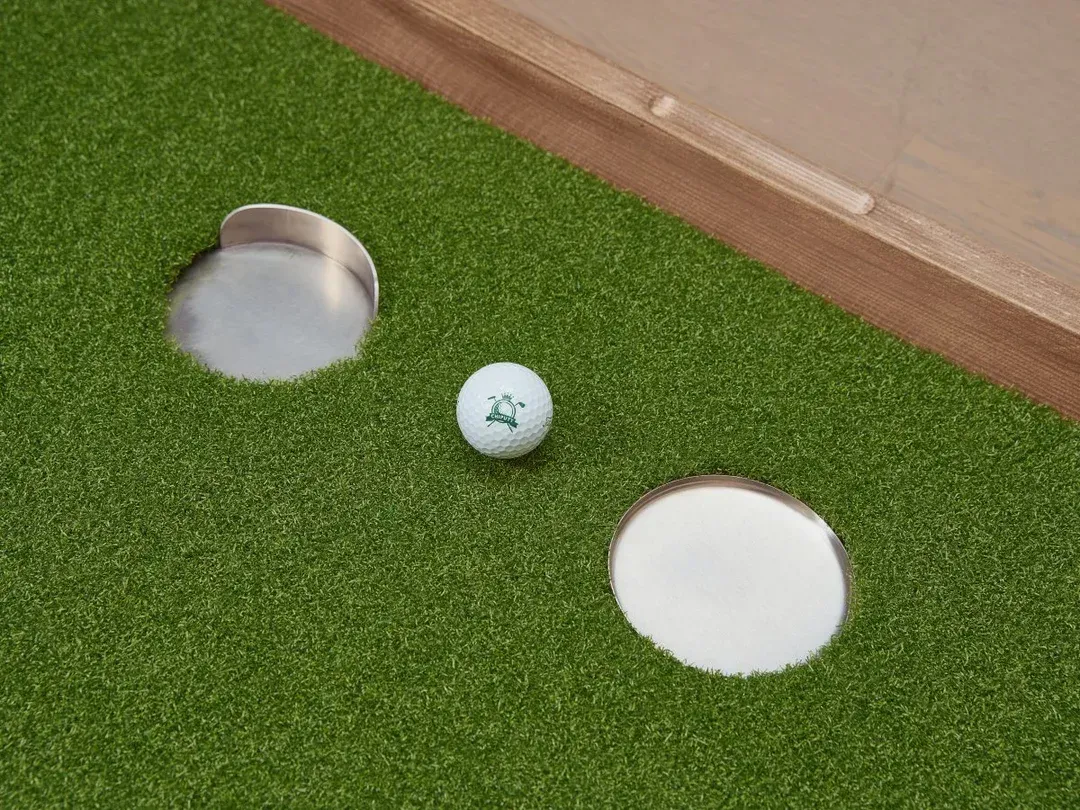Unlock Your Repeatable Swing... Starting TODAY!

Tired of those wild shots that leave you muttering to yourself? Does your swing feel like a runaway train one minute and a hesitant tap the next? What if we told you the secret to finding that sweet spot of consistency is simpler than you think – and it all starts before you even swing?
The pros aren't born with perfect swings; they build them on rock-solid fundamentals. And one of their go-to secrets? The Power Triangle.
This isn't some complicated theory; it's a simple, visual cue that will instantly connect your body and transform your takeaway.
Here's how you can build your own path to consistent strikes:
1. The Foundation: Your Personal Power Triangle
- Let your arms dangle naturally from your shoulders, like they're ready for a handshake.
- Notice the triangle forming from your shoulders down to your hands. This is your power center.
- Crucially, this triangle needs to stay intact as you begin your swing. Think of it as the anchor for consistent contact.
2. Stay Connected, Swing Stronger
- This simple triangle acts like a conductor, ensuring your arms and chest move as one cohesive unit.
- Resist the urge to let your hands or arms race ahead. Maintaining that connected triangle through your initial takeaway is the secret sauce for a smooth, powerful, and repeatable motion.
3. Your Built-In Alignment Tool
- Believe it or not, the top line of your triangle – your shoulder line – is a fantastic guide for squaring up to your target.
- Practice this in front of a mirror. Ensure your power triangle is pointing directly at the ball. This simple check can eradicate those frustrating alignment issues.
4. Relaxed Power is Consistent Power
- While structure is key, tension is the enemy of a fluid swing. Keep your arms relaxed within that triangle. Think stable, not stiff.
________________________________________
Imagen Golf Tip to Take to the Range:
Next time you're warming up, make it a habit: settle into your setup, pause, and take a quick glance at your shoulder-arm triangle. Is it balanced? Is it pointing where you want the ball to go? Nail this simple setup, and you'll be amazed at the difference it makes in your consistency.
This is Golf as You've Always Imagined!

The calendar page is about to flip, and with it, the conversation that's been bubbling beneath the surface of the golf world is set to boil over: Tiger Woods turns 50 on December 30th. That golden birthday means a gold-plated invite to the PGA Tour Champions. As President of Imagen Golf, I've spent years analyzing swings, but with Tiger, we're not just looking at a swing—we're analyzing the DNA of a champion's competitive spirit, and that is where the real story lies.

Hello, I'm Daniel Guest from Imagen Golf, and today we're tackling a topic that chills many golfers: playing in the cold. It’s not just you; the cold weather fundamentally changes how your equipment—specifically the golf ball—performs, and that directly impacts your shot.1 Understanding these effects is the first step toward better cold-weather scoring.

Hey everyone, Daniel Guest here—Top 100 Coach, #1 Instructor in PA, and founder of Imagen Golf. I've given over 39,000 lessons, and if there's one thing I know, it's that the game is always evolving. We're not just practicing anymore; we're training smarter than ever. The days of just grinding on the range are over. The future of golf instruction is personalized, tech-driven, and focused on your unique blueprint. Let's dive into the three biggest game-changers you need to leverage right now to Unleash the Golfer Within!

NEWTOWN, Pa. - Oct. 12, 2025 -- Newtown and surrounding communities are about to experience golf like never before. The Golf Place, a state-of-the-art indoor golf facility designed for enthusiasts of all skill levels, from those honing their game to those simply seeking a fun, engaging golf experience, today announced its grand opening for Tuesday, October 25, 2025. The Golf Place is poised to become the region's premiere destination for indoor golf instruction, practice, and play. The facility will feature eight cutting-edge Trackman golf simulators, offering hyper-realistic gameplay, detailed swing analysis, and access to the world's most famous courses.






